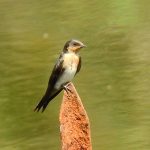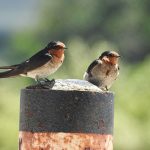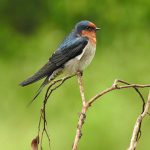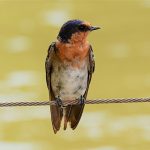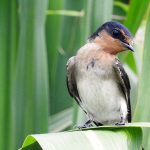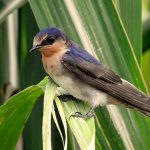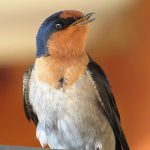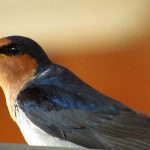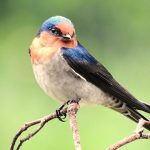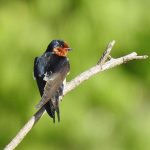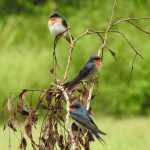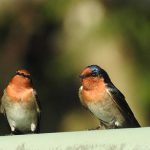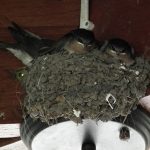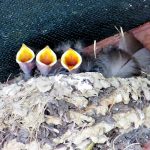WELCOME SWALLOW
The Welcome Swallow is a familiar sight across Australia and is often compared to its European counterparts, especially the Barn Swallow (Hirundo rustica). While they share the same genus and have similar behaviours and appearances, there are distinct differences between them.
One significant difference between the two is their migratory patterns. The European Barn Swallow is a long-distance migrant, travelling from breeding grounds in the Northern Hemisphere to wintering areas in the Southern Hemisphere, including parts of Africa and South America. The Welcome Swallow, however, is mostly sedentary or partially migratory within Australia and nearby regions. Some populations may move locally in response to changing weather conditions, but they do not undertake the vast migratory journeys of their European relatives.
The Welcome Swallow is a small, adaptable bird, measuring about 15 cm in length with a wingspan of 30 cm. it is native to Australasia, is characterised by its glossy blue-black upperparts, chestnut forehead, and a light cinnamon to buff underparts. Its deeply forked tail is a distinctive feature, which aids in its agile flight.
These birds are not just a delight to watch but play a significant role in the ecosystem, as they feed on flying insects, which they catch on the wing with their wide, open mouths. This diet makes them natural pest controllers, and watching a group of swallows in a feeding frenzy is a spectacle of nature’s own ballet.
Welcome Swallows are found across Australia, including Tasmania, and are a common sight in both urban and rural areas. They are known for their adaptability and can nest in a variety of habitats, from open woodlands to grasslands and even busy human environments like car parks and underpasses. Their nests are a testament to their craftsmanship, made of mud and grass and often found under eaves or ledges, safe from the elements and predators.
The breeding season for these swallows runs from August to February, during which time they can raise several broods. The female lays a clutch of 2 to 5 eggs, which are incubated for about two weeks. Both parents are devoted caretakers, feeding and protecting the hatchlings until they fledge around three weeks later.
In Australian culture, the Welcome Swallow is indeed a welcome sight, often associated with good fortune and the arrival of good weather. Their cheerful twittering and aerial grace are a natural part of the Australian soundscape, a joy to behold for birdwatchers and nature lovers alike.

